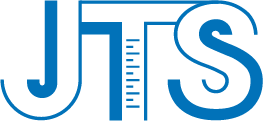Restricted substance testingProduct
Your Location:Home > Restricted substance testingAnnex XVII of the REACH Regulation is a list of restrictions on the manufacture, placing on the market, and use of certain hazardous substances, mixtures, and articles within the European Union. These restrictions are designed to protect human health and the environment.
According to Article 67 of the REACH Regulation: substances, mixtures, or articles containing substances listed in Annex XVII that do not comply with the restriction conditions shall not be placed on the market. The restrictions apply to a wide range of products, including electrical and electronic equipment, chemicals, toys, jewelry, and textiles. The restricted substances and their specific requirements vary depending on the product and must be analyzed on a case-by-case basis.As of August 2025, the latest list of key restricted substances and their requirements under REACH Annex XVII primarily includes the following:
I. Recently Added Restrictions
1. Undecafluorohexanoic acid (PFHxA), its salts, and related substances
•Restriction: PFHxA and its salts must be present in homogeneous materials at concentrations < 25 ppb; the sum of related substances must be < 1000 ppb.
•Effective Date: Added in September 2024, applicable to compounds containing the undecafluorohexyl (C6) group.
2. Siloxanes (D4, D5, D6)
•Restriction: Prohibition of placing on the market or use at concentrations ≥ 0.1% by weight in certain mixtures/articles (with exemptions for specific applications like textile and leather dry-cleaning solvents).
•Effective Date: Effective from June 6, 2026, with some exemptions extended until 2031-2034.
3. N,N-Dimethylacetamide (DMAC) and 1-ethyl-2-pyrrolidone (NEP)
•Restriction: Requires provision of worker exposure risk assessment (DNELs) and implementation of protective measures when concentration ≥ 0.3%.
•Effective Date: Proposed in August 2024, expected to be implemented after an 18-month transition period.
II. List of Common High-Risk SubstancesAnnex XVII has long-standing restrictions on core substances, including but not limited to:
•Heavy Metals: Chromium (VI), Cadmium, Lead, Nickel release (must comply with standards like EN 1811).
•Organic Compounds:
•Formaldehyde, Bisphenol A (BPA), Phthalates.
•Azo dyes, Polycyclic Aromatic Hydrocarbons (PAHs), Per- and polyfluoroalkyl substances (PFAS).
•Others: Polychlorinated phenols, Organotin compounds, Short-chain and Medium-chain Chlorinated Paraffins (SCCPs/MCCPs).
III. Specific Product Restrictions
1. Textiles/Apparel
•Expanded control of Substances of Very High Concern (SVHCs) (e.g., Bisphenol S, Melamine), requiring compliance with the latest SVHC Candidate List (e.g., 235 substances as of the latest update).
•Nickel release must meet the standard EN 12472:2020 (simulated wear and corrosion) in addition to EN 1811.
2. Jewelry/Accessories
•Cadmium content ≤ 0.01% by weight.
•Nickel release rate ≤ 0.5 μg/cm²/week.
3. Children's Products
•Free benzene content ≤ 5 mg/kg.
•Sum of restricted phthalates ≤ 0.1% by weight of the plasticized material.
J-Testing is a CNAS, CMA, and CPSIA accredited laboratory, committed to providing global clients with professional third-party testing, consulting services, and cross-border certification assistance.






 Our Service
Our Service
